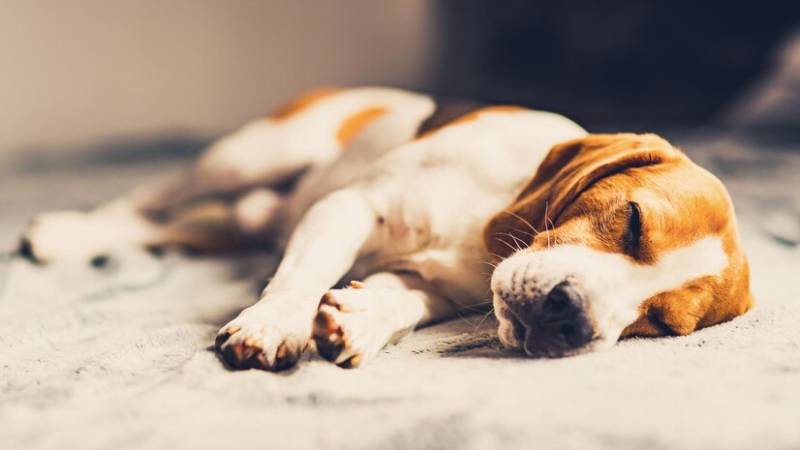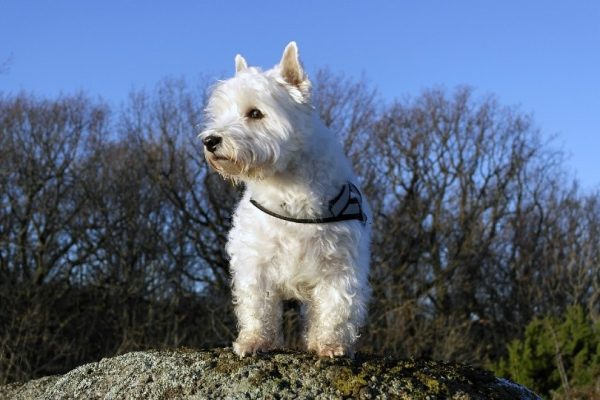In this article
If you’ve never dealt with a seizure before, it can be quite scary to witness, particularly when it happens to your dog. Seizures can present several different signs, but the most important thing is what you can do for your dog after they have a seizure.
Here, we cover what you should and shouldn’t do during a seizure and the best ways to support your dog afterward. We also briefly touch on the different stages of a seizure in dogs.

The 5 Steps to Follow After Your Dog Has Had a Seizure
1. Remain Calm
During and after the seizure, you must remain calm, which will probably be the hardest instruction to follow. Remember that dogs can sense human emotions, and if you’re behaving in an anxious manner, it will only make your dog anxious as well.

2. Provide Comfort
When your dog comes out of the seizure, they will be confused and seem disoriented. It will take them a while to become aware of where they are, so your job is to gently reassure them.
It is important to be aware that following a seizure, dogs can behave differently, even aggressively. Be very careful when approaching your dog after a seizure, as even the most placid of pooches can bite in this state.
Using a soft voice, talk to them, gently pet them, and do whatever will make your dog feel comfortable. If your dog moves to get up, don’t stop them by holding them down, as this will only add to their stress.
3. Provide Protection
If your dog seems disoriented, you’ll want to put up a barrier to any stairs and ensure that they can’t get outside (lock the dog door, etc.). In their current state, they could fall down the stairs or into the swimming pool or another body of water.
Also, ensure that the room that your dog is in doesn’t have any hazards, like sharp objects that they might accidentally bump into. Have a family member help you with these tasks, as you should stay with your dog.
4. Monitor Your Dog
It can take minutes or hours for your dog to recover, and you must observe them during this time. You’re not only providing comfort and ensuring that your dog is safe, but you’re also making certain there isn’t a repeat seizure.
Sometimes, seizures can reoccur within a short period of time. If your dog starts experiencing multiple seizures, call your vet immediately.

5. Keep a Log
You should take notes of your dog’s seizure: the time that it occurred, how long it lasted, and the signs that your dog exhibited. You can provide your veterinarian with this information to help them determine how to treat it and if medication is necessary.

The Three Phases of a Seizure
Seizures have three phases, which you should become familiar with if your dog occasionally experiences them.
1. Aura Phase (Pre-ictal)
The first phase isn’t always noticeable, but signs of an impending seizure might include the following:
- Whining
- Restlessness
- Drooling
- Shaking
- Hiding
- Pacing
- Seeking affection
- Stare off into space

2. Ictal Phase
This is the actual seizure. It can last seconds or minutes, and a typical seizure can have the following signs:
- Falling to their side and becoming stiff
- Trembling, twitching, and shaking
- Paddling their feet
- Chomping their jaws
- Teeth chattering
- Foaming at the mouth and drooling
- Barking or other vocalizations
- Urination/defecation
- Being completely unaware of their surroundings
These are all indicative of a grand mal or generalized seizure. It’s also possible for a dog to have body stiffness but not paddle or be paddling without the stiffness. There’s also a petit mal or absence seizure, in which the dog just loses consciousness for a period of time. Focal seizures are when only a part or parts of the body are affected by seizure activity, such as the uncontrolled twitching or trembling of part of the face, body, or limbs. This type is more difficult to diagnose as its appearance mimics many other conditions, such as muscle weakness, anxiety, or pain.
3. Post-ictal Phase
This is after the seizure, which is where you come in. When a dog comes out of the seizure, they will likely be:
- Dull
- Lethargic
- Disoriented
- Confused
- Pacing and wandering
- Unsteady on their feet
- Temporarily blind
- Running into objects
- Drooling
- Overeat and/or overdrink
This phase may last several minutes to hours, so you will need to follow the previously mentioned steps.
Seek veterinary advice if you’re concerned about your pet’s well-being.
If you need to speak with a vet but can't get to one, head over to PangoVet. It's our online service where you can talk to a vet online and get the advice you need for your dog — all at an affordable price!

What You Should Do During a Seizure
While your dog is experiencing a seizure, there are a few steps that you should take to ensure that they are safe.
Protect Your Dog
Remove any objects near your dog that could harm them, such as sharp objects, and keep them away from pools and stairs.
If they are close to a hazard, gently move them to a safer spot. You can also carefully place a towel under their hind end in case they accidentally urinate or defecate.
If you can, creating a pillow or blanket “fort” around them can be helpful to contain them in a safe zone.
Turn out the lights
Visual and auditory stimuli can exacerbate seizures, so turning down the lights (leave enough light for you to keep an eye on your dog), turning off music and televisions, and closing windows can help to reduce stimulus and bring your dog out of a seizure more quickly, as well as reduce risks of repeat seizures.
Remove Children and Other Pets
You’ll want to clear the room of other pets (cats and dogs) and children or at least keep them away from the affected dog. They won’t understand what’s happening and might become frightened, and their actions might be unpredictable. There have been instances when other pets have attacked the seizing dog and their owners due to confusion and stress.

Time the Seizure
If you have your phone nearby or a clock, you should time how long the seizure lasts. It can often feel as though the seizure has been going on forever when, in reality, it might only be seconds. It will be helpful to tell your vet how long the seizure lasted, as well as the length of the post-ictal period.
Take Notes on the Seizure
Note-taking means more information for your vet. You’ll want to record your dog’s behavior during the seizure. Is your dog paddling their legs? Are they foaming or chomping their jaws?
You can also record the seizure with your phone, but you should only do this if you can still give your dog your full attention. Try to remember what your dog was doing in the hours and minutes leading up to the seizure if you can.
Be Ready to Call for Help
This is when timing the length of the seizure is necessary. If it goes on for longer than 5 minutes, you must call your vet or the closest veterinary emergency clinic right away!
You should also call your vet if the seizures keep occurring without enough time for your dog to recover in between or if they have more than two seizures within 24 hours.


What You Shouldn’t Do During a Seizure
There are a few things that you should never do in order to keep both you and your dog safe.
Don’t Panic
While seeing your dog experiencing a seizure is frightening, you must remain calm. Your dog is not in pain; they are essentially unconscious and are not aware that they are seizing.
They are also unaware that you’re there, so you might get hurt if you’re too close to them during the seizure.
Don’t Go Near Their Mouth
Don’t physically interfere with your dog except to move them away from a dangerous situation. But dogs do not swallow their tongues, so do not put your hand or anything else in their mouth! This is how many dog owners get bitten.


How to Prepare for a Seizure
If your dog has already had a seizure or they are a breed that is genetically predisposed to them, there are a few things that you can do in preparation.
Observe Your Dog
When you are aware that your dog is prone to seizures, you should watch your dog and their behavior carefully. Becoming familiar with how they act on a typical day will make it easier for you to recognize the signs when a seizure is about to happen.
Recognize the Signs
Understanding the aura phase of seizures should help alert you to when one is about to occur. You might see a drastic change in behavior; for example, they might suddenly become anxious and confused. Get to know these signs.

Prepare Ahead of Time
Once you know that a seizure is about to occur, make the room safe and comfortable for your dog, and follow the previous tips. Remove children, other pets, and any sharp objects and decorative pieces that your dog might accidentally knock down.
Talk to your Vet
Your dog may already be on medication for seizures, but there are also treatments available that you can give your pet in the event of a severe or prolonged seizure to help bring them out more quickly, so talk to your vet to make sure you are as prepared as you can be.

Final Thoughts
As long as you keep a cool head during the seizure and ensure that your dog is safe during and afterward, you’re doing your part to help your dog. Your dog might only experience one seizure and never have another, or they might have them regularly.
You’ll need your vet involved to monitor your dog’s condition, and you might need to administer prescribed medication regularly. Be sure to always stay on top of the medications and never skip a dose.
The more information you have on seizures, the better you can handle it if your dog has one.
- See also: Common Seizure Medication For Dogs
Featured Image Credit: ABarts, Freepik



















